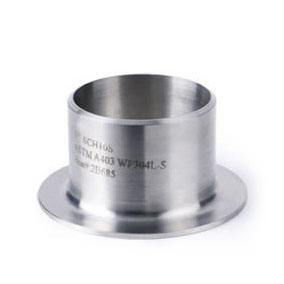ແປນ
-

ເຫຼັກອຸດສາຫະກໍາ Flat Welded Flange ກັບຄໍ
Flanges ການເຊື່ອມໂລຫະເຫຼົ່ານີ້ແມ່ນ ASME B16.5 ແຜ່ນການເຊື່ອມຮາບພຽງ, ASME B16.47 ແຜ່ນການເຊື່ອມຮາບພຽງ, DIN 2634 ແຜ່ນການເຊື່ອມໂລຫະແປ, DIN 2635 ແຜ່ນການເຊື່ອມຮາບພຽງ, DIN 2630 ແຜ່ນການເຊື່ອມຮາບພຽງ, DIN 2636 flat welding, 13 IN2 Flange ການເຊື່ອມໂລຫະແປ. flanges, DIN 2637 flat welding flanges, ແລະອື່ນໆ flanges ແມ່ນພາກສ່ວນທີ່ເຊື່ອມຕໍ່ທໍ່ກັບກັນແລະກັນແລະເຊື່ອມຕໍ່ກັບປາຍທໍ່.ມີຮູຢູ່ຫນ້າແປນ, ແລະ bolts ເຮັດໃຫ້ flanges ສອງເຊື່ອມຕໍ່ແຫນ້ນ.Gaskets ຖືກນໍາໃຊ້ເພື່ອປະທັບຕາລະຫວ່າງ flanges.Flanges ການເຊື່ອມໂລຫະແປແມ່ນເຫມາະສົມສໍາລັບການເຊື່ອມຕໍ່ທໍ່ເຫຼັກທີ່ມີຄວາມກົດດັນນາມບໍ່ເກີນ 2.5MPa.ດ້ານການຜະນຶກຂອງ flanges ການເຊື່ອມໂລຫະແປສາມາດເຮັດດ້ວຍປະເພດກ້ຽງ, concave-convex ແລະລີ້ນແລະຮ່ອງ.
-

ເຫຼັກກ້າອຸດສາຫະກໍາ Slip On Weld Flange
Slip on weld fange ສາມາດໄດ້ຮັບການເລື່ອນໃສ່ທໍ່ແລະຫຼັງຈາກນັ້ນ welded ໃນສະຖານທີ່. ມັນແມ່ນເຮັດດ້ວຍເຫຼັກກາກບອນ, ເຫຼັກໂລຫະປະສົມ, ແລະສະແຕນເລດ. ຂະບວນການອຸດສາຫະກໍາມາເຂົ້າໄປໃນການ forging ຕາຍ, ແລະເຄື່ອງຈັກ, ພວກເຮົາສາມາດສະຫນອງລະດັບຄວາມກ້ວາງຂອງ slip- ໃນ flanges ການເຊື່ອມ, ປະຕິບັດຕາມມາດຕະຖານເຊັ່ນ ASME B16.5, ASME B16.47, DIN 2634, DIN 2630, ແລະອື່ນໆ.
-

Flange ຕາບອດເຫຼັກອຸດສາຫະກໍາ
flanges ຕາບອດແມ່ນເຮັດຈາກເຫຼັກກາກບອນ, ເຫຼັກແຕນເລດແລະເຫຼັກໂລຫະປະສົມ, ແລະອື່ນໆເຂົາເຈົ້າໄດ້ຖືກນໍາໃຊ້ເພື່ອປະທັບຕາຫຼືຕັນອອກຈາກທໍ່, ຄ້າຍຄືຝາປິດຫຼືຫມວກ.ພວກເຮົາສາມາດສະຫນອງຄວາມກ້ວາງຂອງ flanges ຕາບອດ, ຕາມມາດຕະຖານເຊັ່ນ ASME B16.5, ASME B16.47, DIN 2634, DIN 2636, ແລະອື່ນໆ.
-

Flanging ເຫຼັກອຸດສາຫະກໍາ
Flanging ແມ່ນສ້າງຕັ້ງຂຶ້ນໂດຍການຫັນຂອບນອກຫຼືຂອບຂຸມຂອງຜະລິດຕະພັນຫວ່າງເປົ່າຫຼືເຄິ່ງສໍາເລັດຮູບເປັນແຂບຕັ້ງຕາມເສັ້ນໂຄ້ງທີ່ແນ່ນອນ.ອີງຕາມຮູບຮ່າງຂອງເປົ່າແລະຂອບຂອງ workpiece ໄດ້, flanging ສາມາດແບ່ງອອກເປັນຮູພາຍໃນ (ຮູຮອບຫຼືຂຸມທີ່ບໍ່ແມ່ນວົງ) flanging, ຍົນຂອບ flanging ດ້ານນອກແລະຫນ້າດິນ curved flanging, ແລະອື່ນໆ Flanging ສາມາດທົດແທນຂະບວນການແຕ້ມເລິກ. ຂອງບາງພາກສ່ວນທີ່ຊັບຊ້ອນ, ປັບປຸງການໄຫຼຂອງພາດສະຕິກຂອງວັດສະດຸເພື່ອຫຼີກເວັ້ນການ cracking ຫຼື wrinkling.ພວກເຮົາສາມາດສະຫນອງເຫຼັກກາກບອນ flanging, ໂລຫະປະສົມ flanging, ສະແຕນເລດ flanging Edges ແລະອື່ນໆ ຜະລິດຕະພັນເຫຼົ່ານີ້ປະຕິບັດຕາມ ASME B16.9, ISO, API, EN, DIN, BS, JIS, GB ແລະອື່ນໆ.
-

ແຜ່ນເຫຼັກອຸດສາຫະກໍາ Weld Flange
flanges ການເຊື່ອມໂລຫະຂອງພວກເຮົາແມ່ນເຮັດດ້ວຍເຫຼັກກາກບອນ, ເຫຼັກໂລຫະປະສົມ, ເຫຼັກກ້າ, ແລະເຫຼັກປະສິດທິພາບສູງ. ເຂົາເຈົ້າໄດ້ຖືກຜະລິດ, ຕາມມາດຕະຖານ ISO9001 ລະບົບການຄຸ້ມຄອງຄຸນນະພາບ, ແລະສອດຄ່ອງກັບມາດຕະຖານເຊັ່ນ ASME B 16.5.ASME B 16.47, DIN 2634, DIN 2630, ແລະ DIN 2635, ແລະອື່ນໆ. ດັ່ງນັ້ນ, ທ່ານສາມາດເລືອກພວກມັນໄດ້.
-

Flange ການເຊື່ອມໂລຫະ Butt ອຸດສາຫະກໍາ
Butt welding flange ຫມາຍເຖິງ flange ທີ່ມີຄໍແລະການຫັນປ່ຽນທໍ່ກົມແລະການເຊື່ອມ butt ກັບທໍ່.ພວກເຮົາຜະລິດ flanges ການເຊື່ອມ ASME B16.5 butt, ASME B16.47 butt flanges ການເຊື່ອມ, DIN 2631 butt flanges ການເຊື່ອມໂລຫະ, DIN 2637 butt flanges ການເຊື່ອມ, DIN 2632 butt flanges, DIN 2638 buttwelding flanges, DIN 2638 butt ແລະອື່ນໆ flanges ການເຊື່ອມໂລຫະແມ່ນເຫມາະສົມສໍາລັບທໍ່ທີ່ມີການເຫນັງຕີງຂະຫນາດໃຫຍ່ຂອງຄວາມກົດດັນຫຼືອຸນຫະພູມຫຼືອຸນຫະພູມສູງ, ທໍ່ຄວາມກົດດັນສູງແລະອຸນຫະພູມຕ່ໍາຍັງຖືກນໍາໃຊ້ສໍາລັບທໍ່ທີ່ຂົນສົ່ງສື່ມວນຊົນລາຄາແພງ, ໄວໄຟແລະລະເບີດ.Butt welding flanges ບໍ່ຜິດປົກກະຕິໄດ້ງ່າຍ, ມີການປະທັບຕາທີ່ດີ, ແລະຖືກນໍາໃຊ້ຢ່າງກວ້າງຂວາງ.





